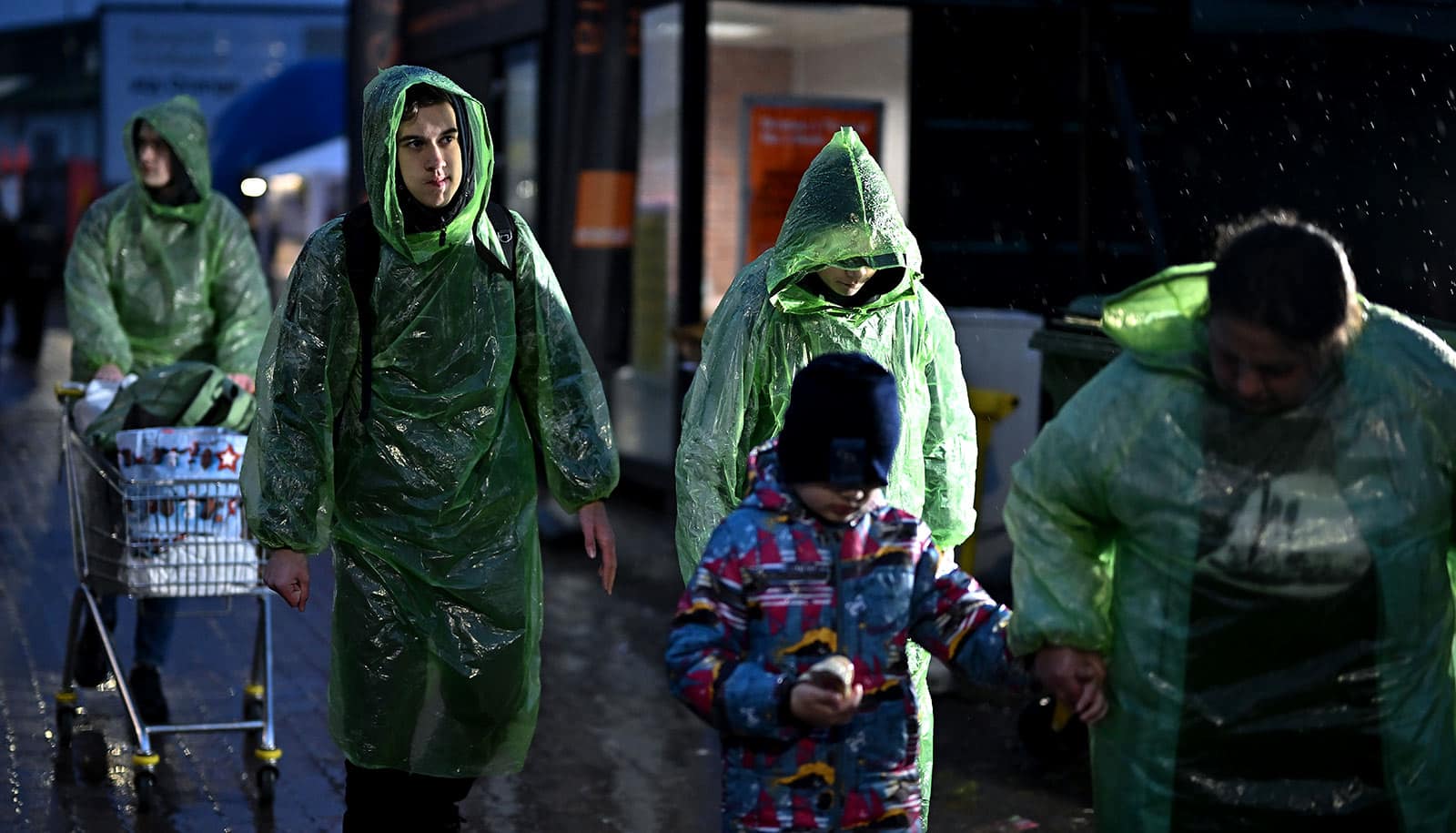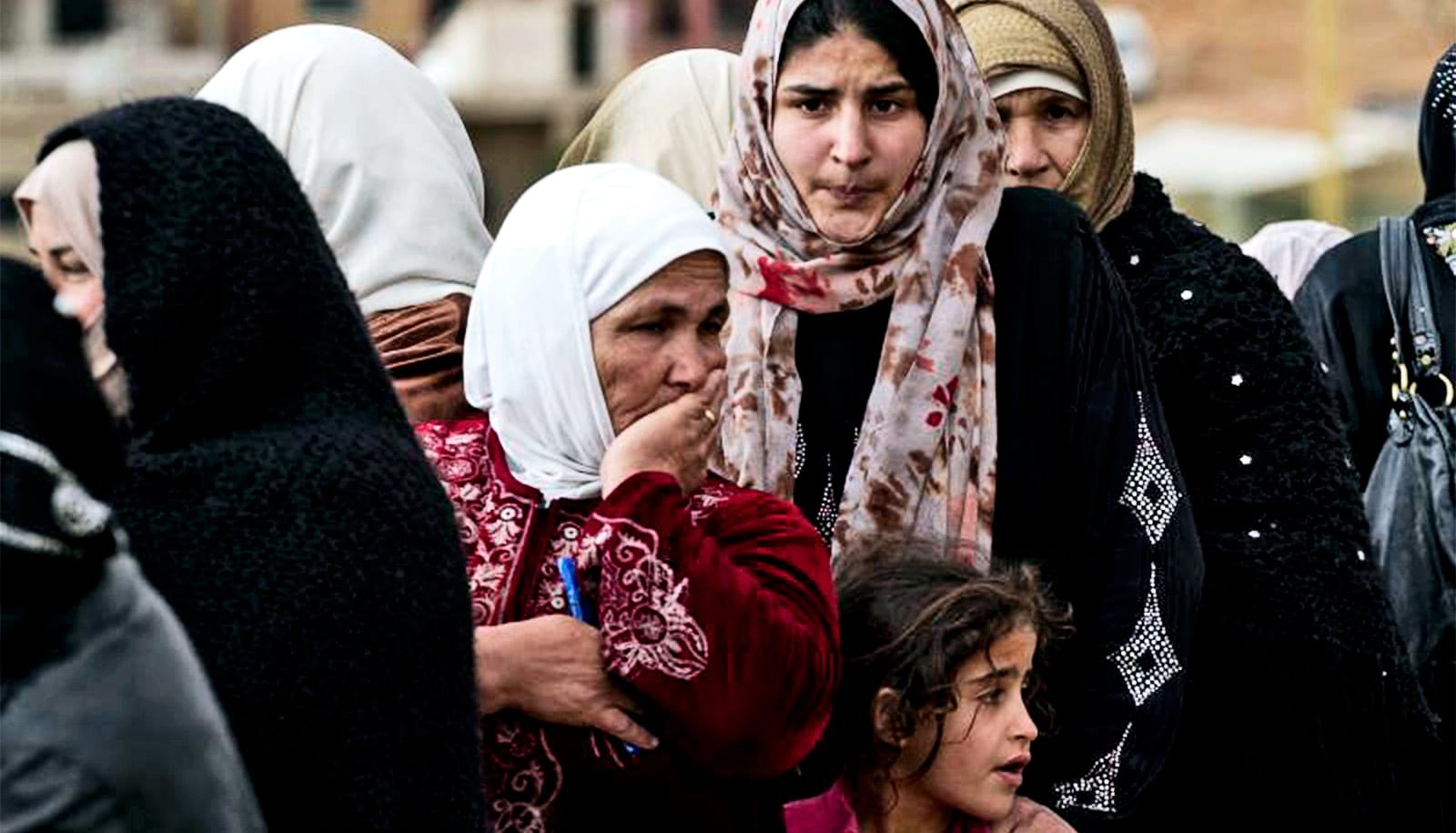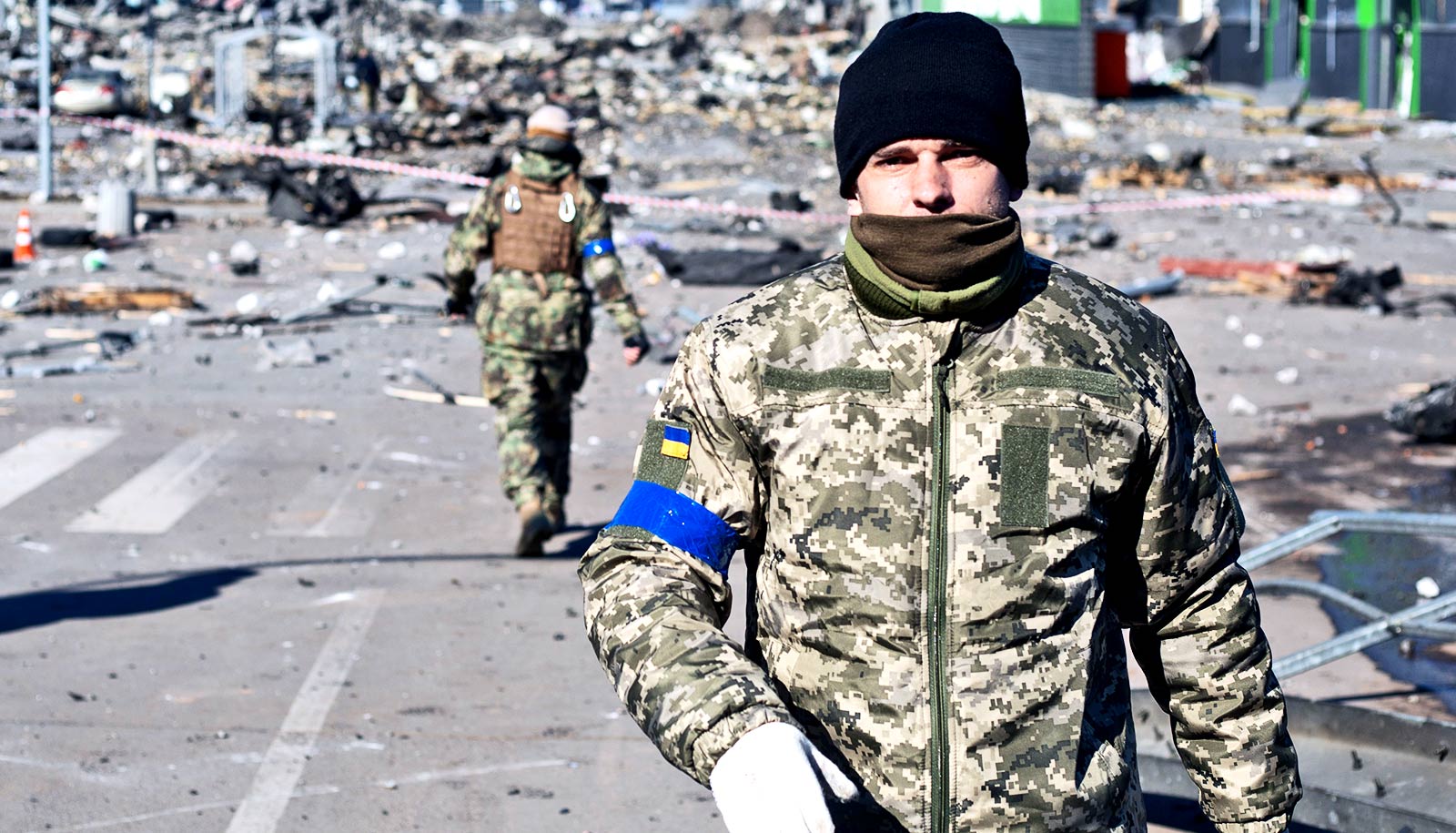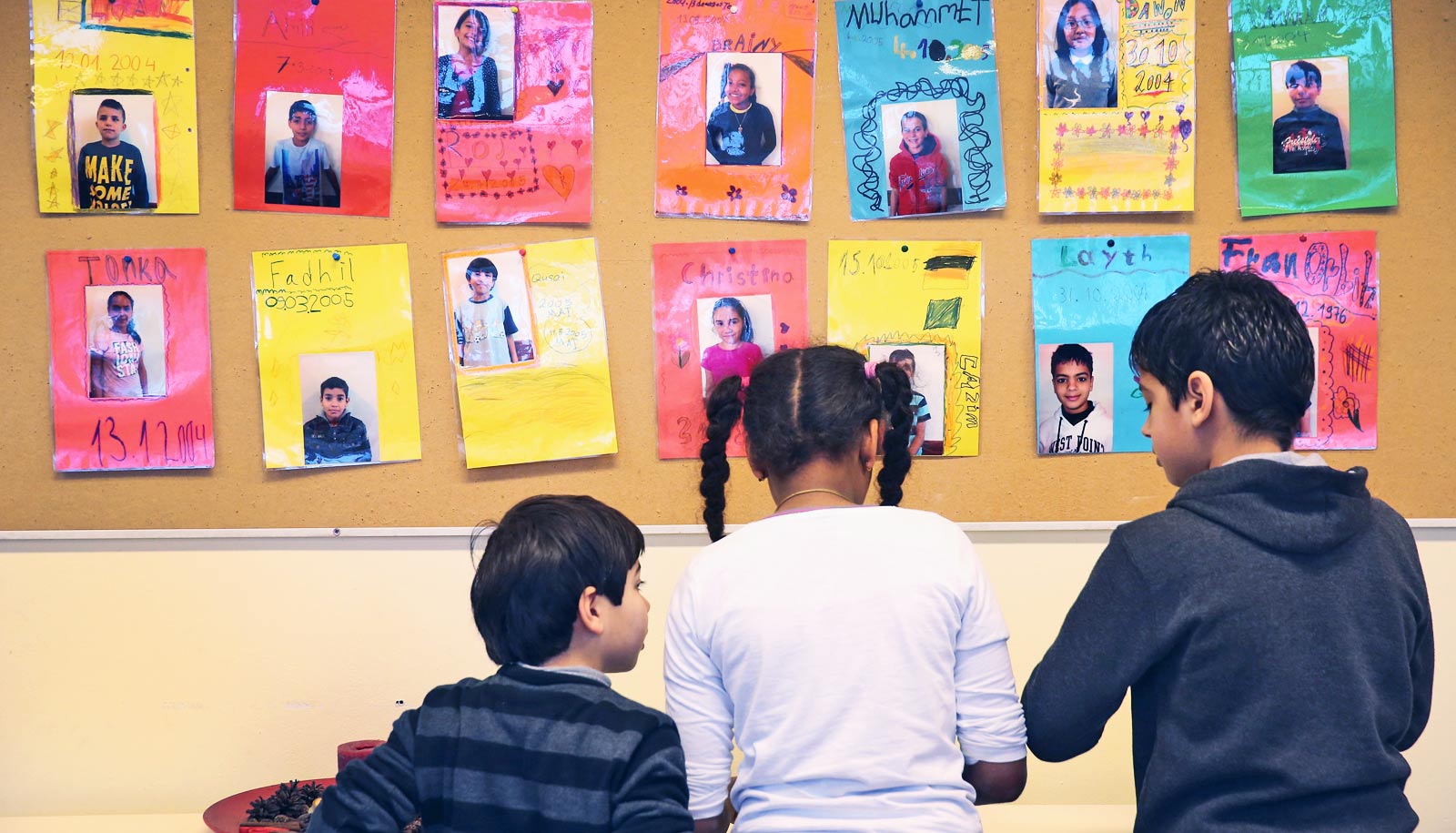The experience of Ukrainian refugees differs from those fleeing other conflicts and difficulties, such as those escaping civil war in Syria and economic hardship in North Africa, says immigration policy scholar David Laitin.
Since Russia invaded Ukraine one month ago on February 24, nearly 3.5 million people have fled Ukraine, and should the conflict continue, an additional 5 million more refugees will likely flee from the country within a year—a rate that is nearly five times as fast as the flow of refugees from Syria and North Africa.
Laitin is professor at Stanford University and is a faculty co-director of the Stanford Immigration Policy Lab, which designs and evaluates immigration and integration policies and programs. Over the past decade, mostly in collaboration with colleague James Fearon, Laitin has published several papers on ethnicity, ethnic cooperation, the sources of civil war and policies that work to settle civil wars.
Laitin offers insight into how European Union (EU) policy is supporting a surge of refugees that the United Nations has described as the largest humanitarian crisis Europe has seen since World War II. Given its magnitude, the Ukraine crisis may prompt leaders to consider policies that cast a wider lens, Laitin says.
Here he discusses Ukrainian refugees and their reception in Europe:
How does Europe’s response to Ukrainian refugees compare to other crises? What explains the difference?
Ukrainian refugees will not be as burdened by systemic failures in European migration policy as were the Syrians and North Africans in 2014-15. That flow increased the world’s refugee population by about 9 million over the next decade, according to data from UNHRC, the United Nations Refugee Agency.
First, the rules of the EU’s Dublin Convention will not pose the same burdens. That convention requires the country that first registered an asylum seeker to administer the application and provide housing. In 2014, Syrian and North African refugees poured into Greece, a country then not equipped to fulfill those treaty obligations. This led to a disorganized and desperate re-migration throughout Europe, with refugees under continued fear of being repatriated. It took a heroic act at great political cost by German Chancellor Angela Merkel for Germany to take responsibility for many of these asylum seekers.
Fortunately for the Ukrainians, Ukraine’s westward neighbors are working assiduously to register and take initial responsibility for this unprecedented flow, which is likely to add another 5 million refugees from Ukraine within a year from the Russian invasion, nearly five times as fast as the flow from Syria and North Africa.
Second, under the EU’s “temporary protection directive,” any Ukrainian national who flees as a result of the invasion, plus his or her partners and children of any nationality, may receive permission to stay in any EU country for one year; previously, a Ukrainian passport permitted visa-free entry into the EU for only up to 90 days.
The 2014-15 refugees had no such rights. Moreover, they were not permitted to work until their asylum application was approved. Data from a project of Stanford’s Immigration Policy Lab (IPL) has shown that the longer applicants wait for resolution of their case, the less likely they are to secure a steady job once approved—in large part due to loss of motivation. Again, Ukrainian refugees will now have the right to enter the European labor market.
How do you anticipate Ukrainians’ experience will unfold compared to that of asylees from Syria or North Africa?
Millions of Ukrainians are living in unimaginable terror; but thankfully the country’s refugees will face a more accommodating Europe than did those who sought similar protection a decade earlier.
The 2014-15 asylees from Syria and North Africa were mostly Muslim and faced higher degrees of discrimination than will the Ukrainians, who are largely of Christian heritage.
Data collected from three IPL projects shows that Muslim immigrants and refugees face higher levels of discrimination in Europe than those with a Christian heritage. This was shown in the behavior of newly certified French civil servants, who were more likely to reject Muslim applicants for refugee status; it was shown in the behavior of Swiss voters denying citizenship to Muslim applicants in direct democratic votes at higher rates than comparable Christians; and it was shown in the behavior of French citizens in experimental protocols fearing and discriminating against increasing numbers of Muslims in their midst more than Christians, even though both groups were from Senegal.
Does the Ukraine crisis reveal any other blind spots or systemic failures in migration policy and discourse?
In responding to refugee crises and surges in asylum applications, the EU has struggled to maintain unity and solidarity among member states. The Dublin Convention has been divisive and especially difficult for Italy and Greece, which have struggled to accommodate migrants arriving by sea. The Italian government has at times closed its ports to foreign boats carrying rescued migrants. Poland, Hungary, and the Czech Republic refused to accept asylum seekers the EU attempted to relocate from Italy and Germany.
However, IPL research has found that Europeans care deeply about fairness in the EU asylum system, and that large majorities would support a plan to allocate asylum seekers in proportion to each country’s capacity, even if that meant their own country would receive more. (Capacity would be determined by population, GDP, unemployment rate, and other factors.) But many European leaders nonetheless feel they are under pressure to minimize the number of asylum seekers within their own country. The European Commission is considering reforms that ensure fair sharing of responsibility, including ending the Dublin Convention, but progress has been slow.
Public policy in the EU and discussions of Dublin Convention reform have been marred by misunderstandings. EU leaders who focus on migration have mostly been concerned with arrivals from Africa, and they have pursued policies to deter these migrants. But they may be misguided to see migration from Africa as their foremost challenge. IPL researchers analyzed survey data collected at transit hubs across West and Central Africa, and they found that only a small share of the migrants there expressed an interest in reaching Europe. The Ukraine crisis may serve as a reminder that migration policy should be based on more careful collection of data.
Broadly, what does your research reveal about the public’s attitude toward refugees? Why are some refugees treated differently than others?
Religion is a key factor influencing attitudes toward refugees. In a survey of almost 20,000 Europeans across 15 countries in 2016, my IPL colleagues found a strong anti-Muslim bias. They also found that eligible voters favored refugees with higher employability. While we do not know the specific educational and skill profile of the now over 3 million Ukrainians who have fled, urban Ukrainians tend to have higher skill levels than other middle-income countries.
Attitudes also are affected by humanitarian concerns: When a refugee is perceived to have a valid claim or specific vulnerability—for example, if he or she was a victim of torture—support is generally higher. With blanket news coverage of the dire situation in Ukraine, Europeans are observing the situation of Ukrainians through this humanitarian lens and thus express greater support for them. But we need to remember that Europeans were impressively generous to the first wave of Syrian refugees, but as the numbers increased, attitudes quickly became exclusive.
Source: Stanford University



